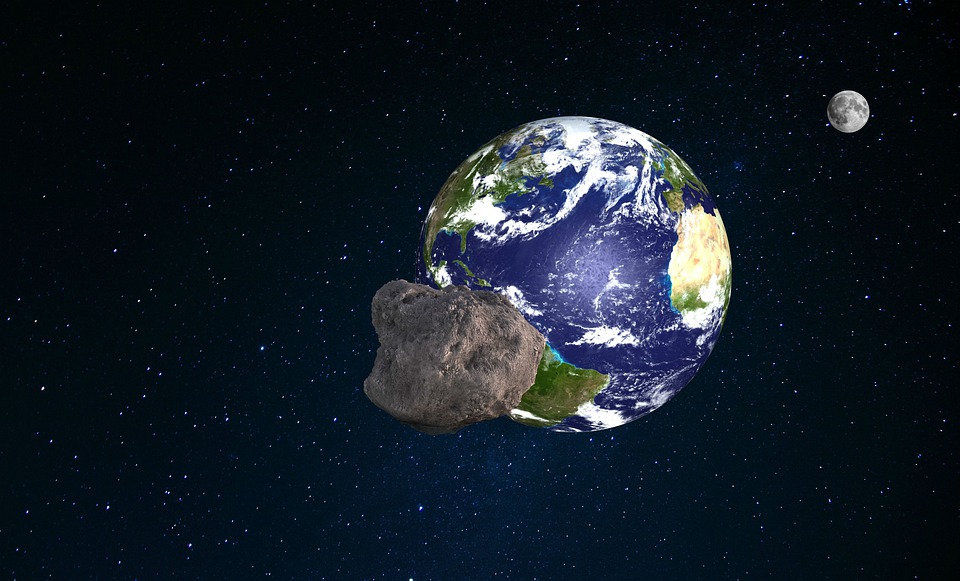US space agency NASA has spotted another asteroid hurtling towards the Earth’s orbit. The rock is predicted to arrive within the planet’s vicinity sometime this week.
Express reports that the agency’s asteroid trackers have once again spotted the asteroid known as 2012 XA133, named after the year it was first confirmed to be within the solar system. XA133 is hurtling towards Earth at a speed of 85, 212 kilometers per hour, and according to the scientists at the agency, it is expected to approach Earth on Friday, March 27th. The Near-Earth Object or NEO measures between 590 feet to 1,279 feet in diameter, making it a fairly large asteroid, but not large enough for it to be classified as a PHO or Potentially Hazardous Object.
Smaller asteroids will only likely burn up when it reaches the atmosphere if those ever decide to strike Earth. Should they make it past, asteroids, the size of XA133 would likely only cause local damage. Potentially hazardous asteroids, such as the asteroid responsible for the extinction of the dinosaurs, can cause harm on a global scale. However, smaller asteroids, like the meteor that struck Chelyabinsk, Russia back in 2013, can also pack quite a punch should it slip past the asteroid trackers undetected.
Fortunately, XA133 is only expected to pass by Earth by Friday, as the closest it will get to Earth would be from a distance of 0.04453 astronomical units. In our terms, it is equivalent to 6.66 million kilometers away.
Another asteroid that NASA is keeping tabs on is 1998 OR2, which is expected to pass by the planet in April. The asteroid, classified as Potentially Hazardous, will get as close as 6.29 million kilometers from Earth when it drops by next month, and astrophysicist Gianluca Masi of the Virtual Telescope Project has already begun photographing the progress of the asteroid as it heads for Earth. Dr. Masi will also stream the asteroid’s approach at night for those who want to witness the approach.
Dr. Masi also revealed that the closer OR2 gets, the more visible it will become for even smaller telescopes to see.



 Senate Sets December 8 Vote on Trump’s NASA Nominee Jared Isaacman
Senate Sets December 8 Vote on Trump’s NASA Nominee Jared Isaacman  Lab-grown meat: you may find it icky, but it could drive forward medical research
Lab-grown meat: you may find it icky, but it could drive forward medical research  Trump and Merck KGaA Partner to Slash IVF Drug Costs and Expand Fertility Coverage
Trump and Merck KGaA Partner to Slash IVF Drug Costs and Expand Fertility Coverage  Cogent Biosciences Soars 120% on Breakthrough Phase 3 Results for Bezuclastinib in GIST Treatment
Cogent Biosciences Soars 120% on Breakthrough Phase 3 Results for Bezuclastinib in GIST Treatment  Neuralink Expands Brain Implant Trials with 12 Global Patients
Neuralink Expands Brain Implant Trials with 12 Global Patients  FDA Lifts REMS Requirement for CAR-T Cell Cancer Therapies
FDA Lifts REMS Requirement for CAR-T Cell Cancer Therapies  Lost in space: MethaneSat failed just as NZ was to take over mission control – here’s what we need to know now
Lost in space: MethaneSat failed just as NZ was to take over mission control – here’s what we need to know now  Ancient Mars may have had a carbon cycle − a new study suggests the red planet may have once been warmer, wetter and more favorable for life
Ancient Mars may have had a carbon cycle − a new study suggests the red planet may have once been warmer, wetter and more favorable for life  Eli Lilly’s Inluriyo Gains FDA Approval for Advanced Breast Cancer Treatment
Eli Lilly’s Inluriyo Gains FDA Approval for Advanced Breast Cancer Treatment  Blue Origin’s New Glenn Achieves Breakthrough Success With First NASA Mission
Blue Origin’s New Glenn Achieves Breakthrough Success With First NASA Mission  SpaceX Starship Test Flight Reaches New Heights but Ends in Setback
SpaceX Starship Test Flight Reaches New Heights but Ends in Setback 






























